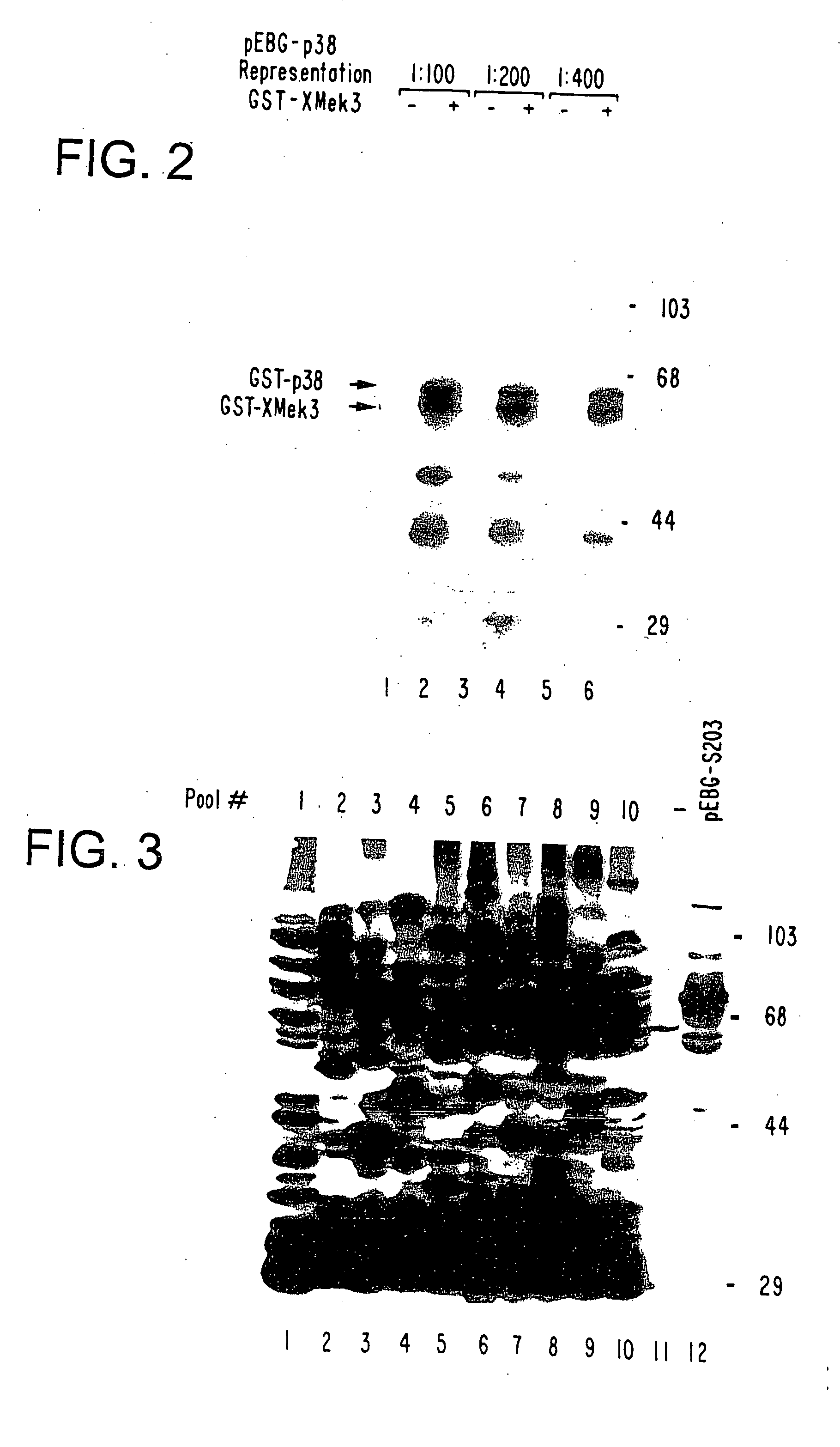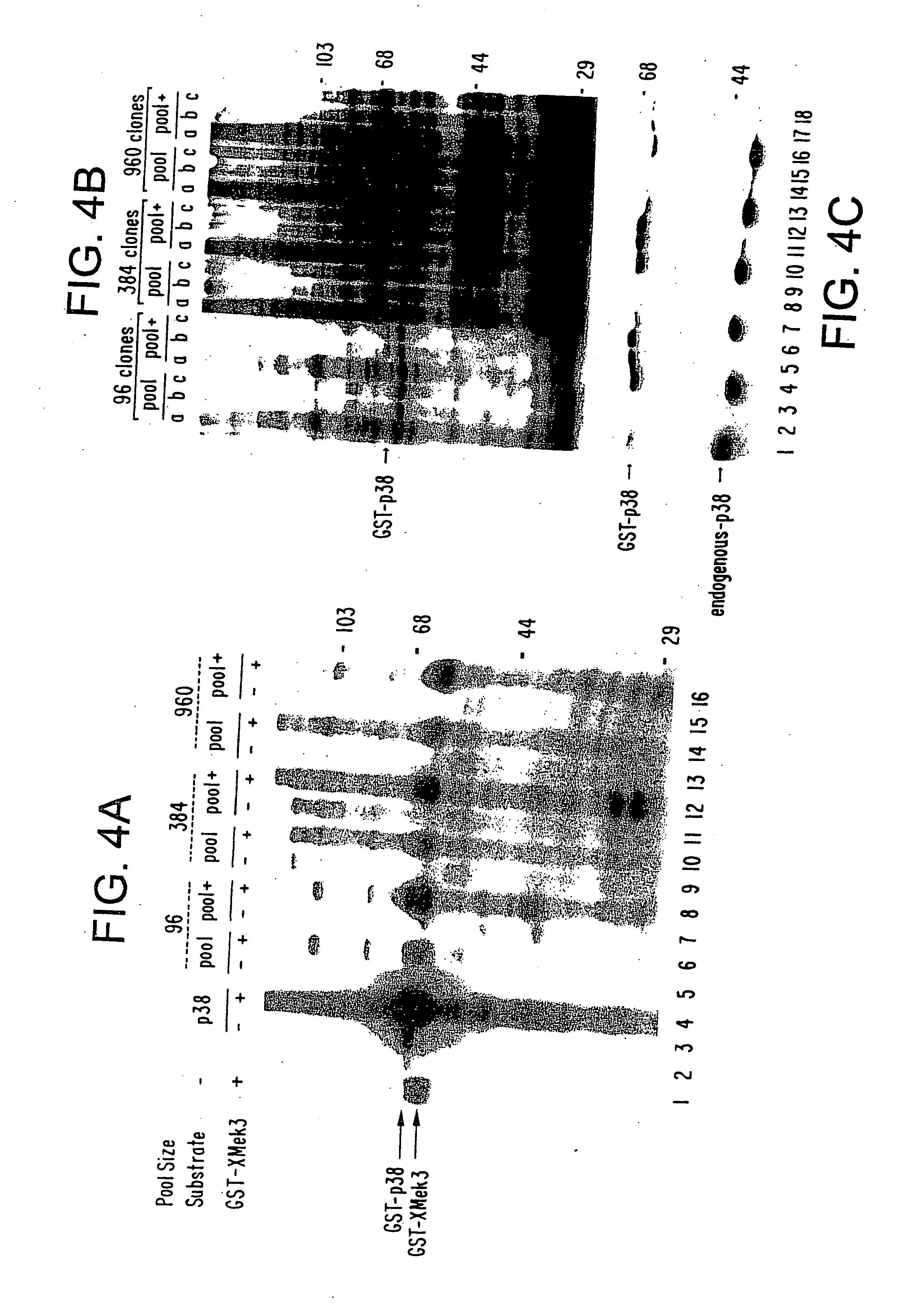Expression cloning using a tagged cDNA library
a technology of cdna library and expression, applied in the field of expression cloning using a tagged cdna library, can solve the problems of difficult detection of desired protein, inability to identify any activity in vitro transcription/translation technique, and many diseased states
- Summary
- Abstract
- Description
- Claims
- Application Information
AI Technical Summary
Benefits of technology
Problems solved by technology
Method used
Image
Examples
Embodiment Construction
[0022] The cDNA expression cloning strategy of the present invention can be used widely for isolating components of intracellular biochemical signaling pathways. The present invention involves screening a mammalian expression library of tagged cDNAs for a biochemical function of interest. For example, but not limited to, screening for a substrate for an enzyme (e.g., a protein kinase) in vitro, screening for specific protein-protein associations in vivo or in vitro and isolating phosphotyrosine regulated or other post-translationally modified proteins from mammalian cells in response to specific stimuli.
[0023] A key component of the method described herein is the expression of tagged polypeptides. In the method of the present invention, an expression library encoding a specific peptide tag at the end of all cDNAs expressed leads to several key advantages. One advantage of the present method is that the expressed polypeptides are rapidly isolated from any background signal due to en...
PUM
 Login to View More
Login to View More Abstract
Description
Claims
Application Information
 Login to View More
Login to View More - R&D
- Intellectual Property
- Life Sciences
- Materials
- Tech Scout
- Unparalleled Data Quality
- Higher Quality Content
- 60% Fewer Hallucinations
Browse by: Latest US Patents, China's latest patents, Technical Efficacy Thesaurus, Application Domain, Technology Topic, Popular Technical Reports.
© 2025 PatSnap. All rights reserved.Legal|Privacy policy|Modern Slavery Act Transparency Statement|Sitemap|About US| Contact US: help@patsnap.com



